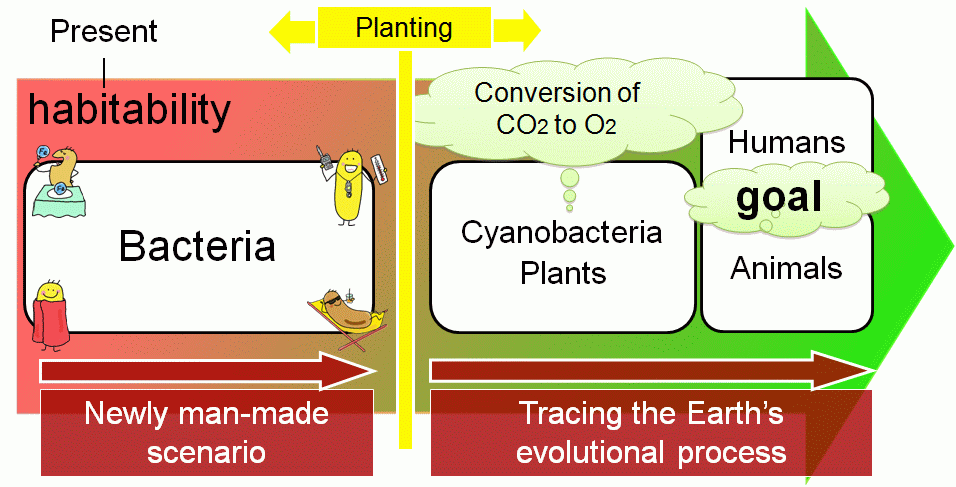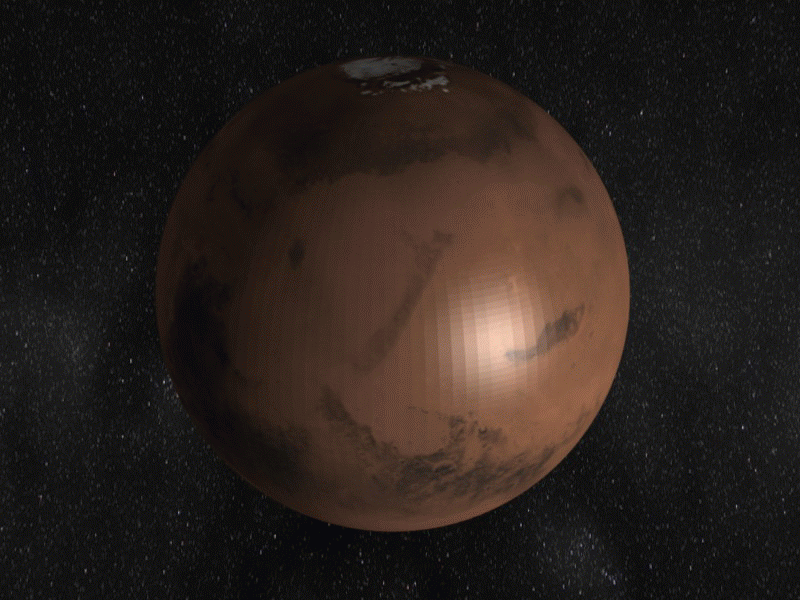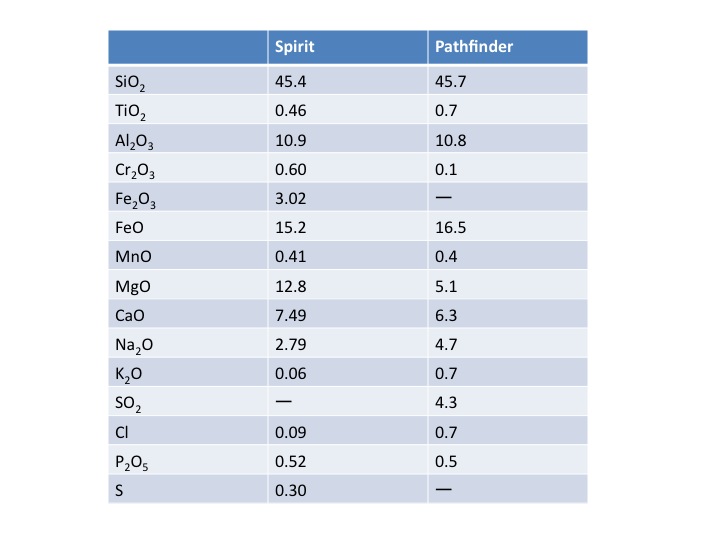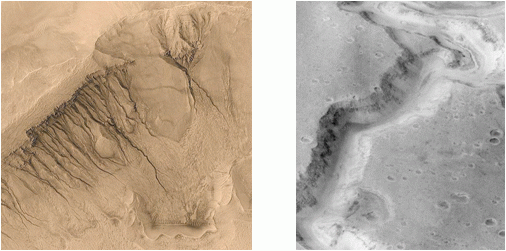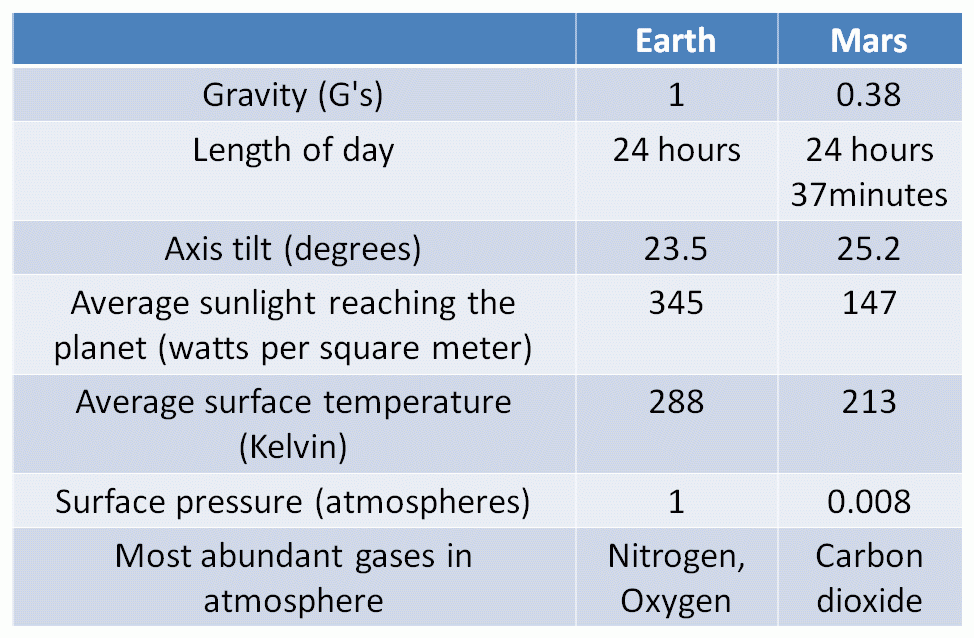Team:Tokyo Tech/Project
From 2009.igem.org
(→Approaches) |
|||
| (79 intermediate revisions not shown) | |||
| Line 1: | Line 1: | ||
{{Template:Tokyo_Tech_Menu}} | {{Template:Tokyo_Tech_Menu}} | ||
| - | |||
| - | |||
| - | |||
| - | |||
| - | |||
| - | |||
{| | {| | ||
|- | |- | ||
| - | |[[Image: | + | |[[Image:Tokyo_Tech_Long_term.gif|400px|thumb|Long term]] |
| - | |[[Image: | + | |[[Image:Tokyo_Tech_Short_term.gif|400px|thumb|Short term]] |
|} | |} | ||
| - | |||
| - | |||
| - | |||
| - | |||
| - | |||
| - | |||
| - | |||
| - | |||
| - | |||
| - | + | ==What is Terra Forming?== | |
| - | | | + | [[Image:Tokyo_Tech_anime.gif|300px|thumb|Red planet turns blue and green]] |
| + | “When will we humans be able to travel freely in space and inhabit another planet in our solar system?” | ||
| - | + | This is a fundamental question, or a dream, we all have asked once before in our childhood or later. This year, Tokyo Tech team provides you with a new combination of “synthetic biology” and “terra forming” which will contribute not only to open the new doors of recent space programs but also to greatly stimulate your intellectual curiosity about future space technologies. | |
| - | + | ||
| - | + | ||
| - | + | ||
| - | + | ||
| - | + | ||
| - | + | ||
| - | + | ||
| - | + | ||
| - | + | ||
| - | + | Terra Forming is a part of planetary engineering, specifically directed at deliberately modifying extraterrestrial planetary environment conditions such as atmosphere, temperature, pressure, surface topography or biosphere to be similar to those of Earth so that the targeted planet will be one day sustainably habitable for human beings and Earth-based life forms. For example, if the surface environment of a particular planet is too dry for life to live and grow , terra-forming technologies play an important role to realize an appropriate environmental condition with sufficient water in liquid form to support life. | |
| - | + | ||
| - | + | ||
| - | + | ||
| - | + | ||
| - | + | ||
| - | + | ||
| - | + | ||
| + | This academic discipline was firstly proposed in a scientific article titled “The Planet Venus (Carl Sagan, 1961, ''Science'')” and then, the concept of “Mars terra forming” was suggested in other articles such as “Planetary Engineering on Mars (Carl Sagan, 1973, ''ICARUS'') and “Terra Forming Mars (Christopher McKay, 1982, ''Journal of the British Interplanetary Society'').” Though some exciting hypothetical processes to terra-form Mars have been proposed by several scientists so far, any of those plans haven’t been carried out yet practically because they generally require big budgets and huge amount of time. However, there are still two positive aspects of terra forming. Firstly, with today’s advanced technologies, we could make current Martian environment suitable for life more effectively and efficiently than ever before. Secondly, such an experiment on a planetary scale would allow us to understand the planet Earth more precisely with different approaches by examining how its ecological systems grow and evolve. As Christopher McKay says in his article "Bringing Life to Mars" (1999, ''Scientific American''), ''“learning how biospheres are built and evolve by themselves is part of the scientific return for the investment in bringing life to Mars…Introducing life to Mars would be of great scientific merit and could be well relevant to sustain the biosphere of Earth”''. In that sense, terra-forming technologies are in need to keep being developed constantly. | ||
| - | [[Image: | + | ==The Most Earth-Like Planet “Mars”== |
| - | + | [[Image:Tokyo_Tech_Composition_Mars.jpg|200px|thumb|Martian Surface Chemical Composition [Toulmin et al. 1977,McSween et al. 2006]]] | |
| - | + | [[Image:Tokyo_Tech_Intro_Surface.gif|200px|thumb|Water on Mars (from NASA)]] | |
| - | + | [[Image:Tokyo_Tech_Data_Planet.gif|200px|thumb|Physical properties of Earth and Mars [Christopher 1999]]] | |
| - | + | This year, Tokyo Tech team has particularly focused on Mars as the most feasible planet in our solar system to realize terra forming though it is now cold, dry and desert-like world with a thin atmosphere. Why? The reason is simple. It’s because Mars is the most Earth-like planet in our solar system. | |
| - | + | ||
| - | + | ||
| - | + | ||
| + | According to a scientific article titled “Bringing Life to Mars (Christopher McKay, 1999, ''Scientific American'')”, it is said that four billions ago, Mars was a warm and wet planet, possibly teeming with life. For instance, more than 30 years ago, the Mariner, Viking, Spirit and Mars Path Finder (space probes developed by National Aeronautics and Space Administration; NASA) found that some chemical elements needed for life were present on Martian surface ([[:Image:Tokyo_Tech_Composition_Mars.jpg|Chemical Composition]]). Recently, the Mars Global Surveyor, another space probe created by NASA, has returned images of canyons, flood valleys and fan-shaped areas suggesting that liquid water, the quintessential ingredient for life, once flowed on the planet’s surface ([[:Image:Tokyo_Tech_Intro_Surface.gif|Water traces on Mars]]). Now, it is considered that water exists in solid form both in the planet’s polar caps and in the soil as well as carbon dioxide in the form of dry ice. Additionally, many of the key physical properties of Mars are remarkably similar to those of Earth such as the length of day (as an important factor for plant life’s photosynthesis) and the axis tilt (as an important factor for season cycle)([[:Image:Tokyo_Tech_Data_Planet.gif|Physical properties of Mars]]). | ||
| - | + | Since Mars is not totally the same with Earth, however, it is true that there exist some unalterable differences between the two planets which might be unsuitable for life. For instance, a Martian year is almost twice the length of an Earth year because Mars is farther from the Sun compared with Earth. Martian gravity is about the one-third that of Earth’s which would be probably too weak to hold as thick atmosphere as Earth’s. Martian atmosphere composition primarily consists of carbon dioxide and a little of nitrogen while Earth’s of nitrogen and oxygen. Moreover, as previously mentioned, Mars is currently too cold and too dry. | |
| + | However, microbes and plants should be likely to adjust easily to those differences interrelated to each other with appropriate and effective human intervention and biological changes. Since Mars is the most Earth-like planet in our solar system compared with any other planets having been considered as potential sites for life, such as Venus having excessively hot temperatures or Titan being too far away from the Sun, Mars is relatively the most feasible planet to realize terra forming. This is the reason why we have focused specifically on Mars as a terra-forming objective. | ||
| + | |||
| + | |||
| + | === Microbial Stages Towards Planting And Beyond === | ||
| + | [[Image:Tokyo_Tech_Long_term.gif|right|400px|thumb|Microbial Eco-synthesis Towards Planting]] | ||
| + | Based on the current environmental conditions of Mars, how can we concretely approach to the realization of terra-forming the planet? | ||
| + | |||
| + | First of all, throughout the entire process of Mars terra forming, our primary objective is to constantly enhance the Martian habitability for human beings to eventually live on the planet in the distant future. This objective, however, cannot be achieved in a sudden without taking all necessary steps to steadily carry out terra forming with logical approaches. So, as shown in [[:Image:Tokyo_Tech_Long_term.gif|the picture on the right side]], we propose a long-term plan of Mars terra forming whose entire process broadly splits into two different stages before and after the introduction of plant life to Mars (planting). | ||
| + | |||
| + | Once Martian environment gets more life-friendly for plants and cyanobacteria to grow stably and photosynthesize efficiently on the surface, we consider all what needs to be done in the latter stage of terra forming is to just trace the Earth evolutional process basically, sometimes with effective human intervention at appropriate times which is still necessary to accelerate the pace of evolution in a fine balance with terra forming. More concretely, after the generation of thicker carbon-dioxide atmosphere was triggered during the former stage of terra forming and the planet has been warmed to Earth-like temperatures by trapping the energy from sunlight with the accumulation of organic matters, liquid water, nitrogen and other necessary energy resources on the surface for plants and cyanobacteria, natural growth of imported photosynthetic organisms would allow the conversion of carbon dioxide to oxygen which eventually makes the Martian atmosphere more similar to Earth’s (primarily composed of nitrogen with oxygen levels close to 25% and carbon dioxide levels less than 1%) and enables human beings and animals to respire on Mars. Since carbon dioxide plays an important role not only to help satisfy the metabolic needs of plants and cyanobacteria but also to heat the planet, however, man-made additions of green house gases to keep the planet warm are required to make up for some decrease in green-house effects caused by the consumption of carbon dioxide through photosynthesis. All in all, in the latter stage, tracing the Earth evolutional process would be enough. | ||
| + | |||
| + | <br /> | ||
| + | [[Image:Tokyo_Tech_Short_term.gif|400px|thumb|Concrete Process of the Microbial Eco-synthesis]] | ||
| + | |||
| + | === Concrete Process of the Microbial Eco-synthesis === | ||
| + | Therefore, the key of this Mars terra forming lies in the former stage, the microbial stage towards planting and beyond. In order to create a more habitable Martian environment for plants and cyanobacteria, our first objective in the beginning of terra forming is synthesizing microbial biospheres to realize ideal conditions for planting which requires a totally new man-made scenario. Our scenario is as follows: | ||
| + | |||
| + | 1. First, by utilizing energy from Earth, the bacteria specifically designed to adapt to Mars environment will be imported into the surface. | ||
| + | |||
| + | 2. Second, after the first type of bacteria producing energy or accumulating organic matters successfully adjust to the environment, the second type of bacteria specifically designed to modify Martian environment by utilizing energy on the surface will be imported. | ||
| + | |||
| + | 3. Third, as the consequence of collaboration with the first and second type of bacteria, water accumulation and atmosphere generation gradually happen in sequence on the surface which enable plants and cyanobacteria to inhabit Mars. | ||
| + | |||
| + | |||
| + | [[Image:Tokyo_Tech_Short_term_approach.gif|400px|thumb|Five key components for Mars terra forming]] | ||
==Approaches== | ==Approaches== | ||
| - | + | As concrete approaches to realize the long-term plan of terra forming, we have five conceivable key components which would play an important role to adapt to and modify Martian environment. Those are 1)Iron-Oxidizing Baceria, 2) Microbial Consortium, 3) Anti-Freezing Protein (AFP), 4) Blackened Bacteria and 5) N2-Generating Bacteria. | |
| + | This year, we Tokyo Tech team focus on all of those components except N2-generating bacteria. | ||
<!-- | <!-- | ||
| Line 96: | Line 91: | ||
<html> | <html> | ||
<body> | <body> | ||
| - | <table> | + | <table align="center"> |
<tr> | <tr> | ||
| - | <td width="300"> | + | <td width="300" align="center"> |
| + | <a href="https://2009.igem.org/Team:Tokyo_Tech/DarkercoloredEcoli"><img width="150" height="150" src="https://static.igem.org/mediawiki/2009/2/23/Tokyo_Tech_5.gif"></a><h3><a href="https://2009.igem.org/Team:Tokyo_Tech/BlackenedEcoli">Blackened <i>E.coli</i></a></h3> | ||
| + | </td> | ||
| + | <td width="300" align="center"> | ||
<a href="https://2009.igem.org/Team:Tokyo_Tech/Iron-oxidizing_bacteria"><img width="150" height="150" src="https://static.igem.org/mediawiki/2009/2/2c/Tokyo_Tech_3.gif"></a><h3><a href="https://2009.igem.org/Team:Tokyo_Tech/Iron-oxidizing_bacteria">Iron-oxidizing bacteria</a></h3> | <a href="https://2009.igem.org/Team:Tokyo_Tech/Iron-oxidizing_bacteria"><img width="150" height="150" src="https://static.igem.org/mediawiki/2009/2/2c/Tokyo_Tech_3.gif"></a><h3><a href="https://2009.igem.org/Team:Tokyo_Tech/Iron-oxidizing_bacteria">Iron-oxidizing bacteria</a></h3> | ||
| - | |||
| - | |||
| - | |||
</td> | </td> | ||
</tr> | </tr> | ||
<tr> | <tr> | ||
| - | <td width="300"> | + | <td width="300" align="center"> |
| + | <a href="https://2009.igem.org/Team:Tokyo_Tech/Consortium"><img width="150" height="150" src="https://static.igem.org/mediawiki/2009/f/ff/Tokyo_Tech_Terra_Form.gif"></a><h3><a href="https://2009.igem.org/Team:Tokyo_Tech/Consortium">Consortium</a></h3> | ||
| + | </td> | ||
| + | <td width="300" align="center"> | ||
<a href="https://2009.igem.org/Team:Tokyo_Tech/Antifreeze"><img width="150" height="150" src="https://static.igem.org/mediawiki/2009/1/10/Tokyo_Tech_4-2.gif"></a><h3><a href="https://2009.igem.org/Team:Tokyo_Tech/Antifreeze">Antifreeze protein</a></h3> | <a href="https://2009.igem.org/Team:Tokyo_Tech/Antifreeze"><img width="150" height="150" src="https://static.igem.org/mediawiki/2009/1/10/Tokyo_Tech_4-2.gif"></a><h3><a href="https://2009.igem.org/Team:Tokyo_Tech/Antifreeze">Antifreeze protein</a></h3> | ||
</td> | </td> | ||
| - | <td | + | </tr> |
| - | <a href="https://2009.igem.org/Team:Tokyo_Tech/ | + | <!-- <tr> |
| + | <td> | ||
| + | <a href="https://2009.igem.org/Team:Tokyo_Tech/cph"><img width="150" height="150" src="https://static.igem.org/mediawiki/2009/c/c7/Tokyo_Tech_index05.gif"></a><h3><a href="https://2009.igem.org/Team:Tokyo_Tech/cph">Cph</a></h3> | ||
</td> | </td> | ||
</tr> | </tr> | ||
| + | --> | ||
</table> | </table> | ||
| - | |||
| - | |||
</body> | </body> | ||
</html> | </html> | ||
| + | <!-- | ||
(Abstract/link of each idea) | (Abstract/link of each idea) | ||
| + | --> | ||
==Related works== | ==Related works== | ||
| - | + | *'''Sagan, C.''' The Planet Venus: Recent observations shed light on the atmosphere, surface, and possible biology of the nearest planet. ''Science (New York)'', 1961, 133, 849 | |
| + | *'''McKay, C.''' Terra-forming Mars, ''Journal of the British Interplanetary Society'', 1982, 35, 427-433 | ||
| + | *'''McKay, C.''' Bringing life to Mars, ''Scientific American--The Future of Space Exploration'', 1999, 1, 20-23 | ||
| + | *'''Toulmin, P., Rose, H., Christian, R., Baird, A., Evans, P., Clark, B., Keil, K. & Kelliher, W.''' Geochemical and mineralogical interpretation of the Viking inorganic chemical results(for Martian surface materials) ''Journal of Geophysical Research'', 1977, 82, 4625-4634 | ||
| + | *'''McSween, H. & Wyatt, M.''' Characterization and petrologic interpretation of olivine-rich basalts at Gusev Crater, Mars ''Journal of geophysical research''. E, Planets, 2006, 111, 1-E02S10 | ||
Latest revision as of 03:57, 22 October 2009
| Main | Team | Terraforming | Experiments | [http://partsregistry.org/cgi/partsdb/pgroup.cgi?pgroup=iGEM2009&group=Tokyo_Tech Parts] | Safety |
Contents |
What is Terra Forming?
“When will we humans be able to travel freely in space and inhabit another planet in our solar system?”
This is a fundamental question, or a dream, we all have asked once before in our childhood or later. This year, Tokyo Tech team provides you with a new combination of “synthetic biology” and “terra forming” which will contribute not only to open the new doors of recent space programs but also to greatly stimulate your intellectual curiosity about future space technologies.
Terra Forming is a part of planetary engineering, specifically directed at deliberately modifying extraterrestrial planetary environment conditions such as atmosphere, temperature, pressure, surface topography or biosphere to be similar to those of Earth so that the targeted planet will be one day sustainably habitable for human beings and Earth-based life forms. For example, if the surface environment of a particular planet is too dry for life to live and grow , terra-forming technologies play an important role to realize an appropriate environmental condition with sufficient water in liquid form to support life.
This academic discipline was firstly proposed in a scientific article titled “The Planet Venus (Carl Sagan, 1961, Science)” and then, the concept of “Mars terra forming” was suggested in other articles such as “Planetary Engineering on Mars (Carl Sagan, 1973, ICARUS) and “Terra Forming Mars (Christopher McKay, 1982, Journal of the British Interplanetary Society).” Though some exciting hypothetical processes to terra-form Mars have been proposed by several scientists so far, any of those plans haven’t been carried out yet practically because they generally require big budgets and huge amount of time. However, there are still two positive aspects of terra forming. Firstly, with today’s advanced technologies, we could make current Martian environment suitable for life more effectively and efficiently than ever before. Secondly, such an experiment on a planetary scale would allow us to understand the planet Earth more precisely with different approaches by examining how its ecological systems grow and evolve. As Christopher McKay says in his article "Bringing Life to Mars" (1999, Scientific American), “learning how biospheres are built and evolve by themselves is part of the scientific return for the investment in bringing life to Mars…Introducing life to Mars would be of great scientific merit and could be well relevant to sustain the biosphere of Earth”. In that sense, terra-forming technologies are in need to keep being developed constantly.
The Most Earth-Like Planet “Mars”
This year, Tokyo Tech team has particularly focused on Mars as the most feasible planet in our solar system to realize terra forming though it is now cold, dry and desert-like world with a thin atmosphere. Why? The reason is simple. It’s because Mars is the most Earth-like planet in our solar system.
According to a scientific article titled “Bringing Life to Mars (Christopher McKay, 1999, Scientific American)”, it is said that four billions ago, Mars was a warm and wet planet, possibly teeming with life. For instance, more than 30 years ago, the Mariner, Viking, Spirit and Mars Path Finder (space probes developed by National Aeronautics and Space Administration; NASA) found that some chemical elements needed for life were present on Martian surface (Chemical Composition). Recently, the Mars Global Surveyor, another space probe created by NASA, has returned images of canyons, flood valleys and fan-shaped areas suggesting that liquid water, the quintessential ingredient for life, once flowed on the planet’s surface (Water traces on Mars). Now, it is considered that water exists in solid form both in the planet’s polar caps and in the soil as well as carbon dioxide in the form of dry ice. Additionally, many of the key physical properties of Mars are remarkably similar to those of Earth such as the length of day (as an important factor for plant life’s photosynthesis) and the axis tilt (as an important factor for season cycle)(Physical properties of Mars).
Since Mars is not totally the same with Earth, however, it is true that there exist some unalterable differences between the two planets which might be unsuitable for life. For instance, a Martian year is almost twice the length of an Earth year because Mars is farther from the Sun compared with Earth. Martian gravity is about the one-third that of Earth’s which would be probably too weak to hold as thick atmosphere as Earth’s. Martian atmosphere composition primarily consists of carbon dioxide and a little of nitrogen while Earth’s of nitrogen and oxygen. Moreover, as previously mentioned, Mars is currently too cold and too dry.
However, microbes and plants should be likely to adjust easily to those differences interrelated to each other with appropriate and effective human intervention and biological changes. Since Mars is the most Earth-like planet in our solar system compared with any other planets having been considered as potential sites for life, such as Venus having excessively hot temperatures or Titan being too far away from the Sun, Mars is relatively the most feasible planet to realize terra forming. This is the reason why we have focused specifically on Mars as a terra-forming objective.
Microbial Stages Towards Planting And Beyond
Based on the current environmental conditions of Mars, how can we concretely approach to the realization of terra-forming the planet?
First of all, throughout the entire process of Mars terra forming, our primary objective is to constantly enhance the Martian habitability for human beings to eventually live on the planet in the distant future. This objective, however, cannot be achieved in a sudden without taking all necessary steps to steadily carry out terra forming with logical approaches. So, as shown in the picture on the right side, we propose a long-term plan of Mars terra forming whose entire process broadly splits into two different stages before and after the introduction of plant life to Mars (planting).
Once Martian environment gets more life-friendly for plants and cyanobacteria to grow stably and photosynthesize efficiently on the surface, we consider all what needs to be done in the latter stage of terra forming is to just trace the Earth evolutional process basically, sometimes with effective human intervention at appropriate times which is still necessary to accelerate the pace of evolution in a fine balance with terra forming. More concretely, after the generation of thicker carbon-dioxide atmosphere was triggered during the former stage of terra forming and the planet has been warmed to Earth-like temperatures by trapping the energy from sunlight with the accumulation of organic matters, liquid water, nitrogen and other necessary energy resources on the surface for plants and cyanobacteria, natural growth of imported photosynthetic organisms would allow the conversion of carbon dioxide to oxygen which eventually makes the Martian atmosphere more similar to Earth’s (primarily composed of nitrogen with oxygen levels close to 25% and carbon dioxide levels less than 1%) and enables human beings and animals to respire on Mars. Since carbon dioxide plays an important role not only to help satisfy the metabolic needs of plants and cyanobacteria but also to heat the planet, however, man-made additions of green house gases to keep the planet warm are required to make up for some decrease in green-house effects caused by the consumption of carbon dioxide through photosynthesis. All in all, in the latter stage, tracing the Earth evolutional process would be enough.
Concrete Process of the Microbial Eco-synthesis
Therefore, the key of this Mars terra forming lies in the former stage, the microbial stage towards planting and beyond. In order to create a more habitable Martian environment for plants and cyanobacteria, our first objective in the beginning of terra forming is synthesizing microbial biospheres to realize ideal conditions for planting which requires a totally new man-made scenario. Our scenario is as follows:
1. First, by utilizing energy from Earth, the bacteria specifically designed to adapt to Mars environment will be imported into the surface.
2. Second, after the first type of bacteria producing energy or accumulating organic matters successfully adjust to the environment, the second type of bacteria specifically designed to modify Martian environment by utilizing energy on the surface will be imported.
3. Third, as the consequence of collaboration with the first and second type of bacteria, water accumulation and atmosphere generation gradually happen in sequence on the surface which enable plants and cyanobacteria to inhabit Mars.
Approaches
As concrete approaches to realize the long-term plan of terra forming, we have five conceivable key components which would play an important role to adapt to and modify Martian environment. Those are 1)Iron-Oxidizing Baceria, 2) Microbial Consortium, 3) Anti-Freezing Protein (AFP), 4) Blackened Bacteria and 5) N2-Generating Bacteria. This year, we Tokyo Tech team focus on all of those components except N2-generating bacteria.
 Blackened E.coli |
 Iron-oxidizing bacteria |
 Consortium |
 Antifreeze protein |
Related works
- Sagan, C. The Planet Venus: Recent observations shed light on the atmosphere, surface, and possible biology of the nearest planet. Science (New York), 1961, 133, 849
- McKay, C. Terra-forming Mars, Journal of the British Interplanetary Society, 1982, 35, 427-433
- McKay, C. Bringing life to Mars, Scientific American--The Future of Space Exploration, 1999, 1, 20-23
- Toulmin, P., Rose, H., Christian, R., Baird, A., Evans, P., Clark, B., Keil, K. & Kelliher, W. Geochemical and mineralogical interpretation of the Viking inorganic chemical results(for Martian surface materials) Journal of Geophysical Research, 1977, 82, 4625-4634
- McSween, H. & Wyatt, M. Characterization and petrologic interpretation of olivine-rich basalts at Gusev Crater, Mars Journal of geophysical research. E, Planets, 2006, 111, 1-E02S10
 "
"

